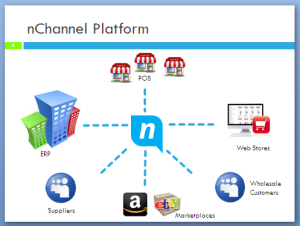
- #Emv integration with microsoft dynamics rms software#
- #Emv integration with microsoft dynamics rms free#


The BIN number identifies the card brand (Visa, MasterCard etc), card issuing bank, type of card (debit or credit), category of card (business, purchasing, prepaid, etc), and country of origin, in addition to other data. Interchange fees, the bulk of credit card processing fees are related to the BIN. Card issuers refer to the leading six digits on the card as an “issuer identification number (IIN)”, or “bank identification number (BIN)”. Identifying BIN numbers is a challenge due to multiple resources to obtain and maintain the data, which is in a constant state of flux. Bin management requires a hosted, server-based payment gateway. What is bin management software, or bin spinning? How does bin management differ from interchange optimization with least cost routing? Shift4’s Universal Transaction Gateway ® (UTG®), Element’s CardSense™, and CenPOS’s end to end payment engine have different approaches to helping merchants reduce credit card processing fees. Posted in CenPOS, level 3 processing, managing costs | Tagged, CenPOS, virtual terminal | Leave a reply Bin Management – Shift4 vs CardSense vs CenPOS
#Emv integration with microsoft dynamics rms free#
Contact CenPOS Authorized Reseller Christine Speedy today for a demo and free trial.
#Emv integration with microsoft dynamics rms software#
No special software is required users can access via a secure web page, mobile device, or integrated solution. CenPOS is compatible with all the major processors, so merchants do not need to change their financial partners. CenPOS automates interchange management in compliance with card acceptance rules, making it light and easy for users to comply, while also removing employee decision making that can impact the cost of card acceptance.ĬenPOS customers achieve similar results across all sales channels, including retail. These include submitting level 3 data, valid authorization, and authorization and settlement amount must match, among others. How does CenPOS help merchants qualify transactions for level 3 rates? There are multiple requirements to qualify for the level 3 rates. $25,000 sale, cost is $662.60 vs $365.20 CenPOS.* vs CenPOS payment gateway example for Level 4 card The examples below include the interchange fees above and the payment gateway transaction fees for qualifying transactions at Data Rate I and CenPOS qualifying transactions at Data Rate III (also known as Data Rate 1 and Data Rate 3) vs CenPOS payment gateway example for Level 1 card Most business to business companies do not have a sales tax amount. If tax exempt ($0 entered as tax amount or blank) will clear at Commercial Data Rate I. While the virtual terminal supports Level II Data, to qualify for the Level II rate, it requires a valid sales tax amount, tax indicator and valid tax id. Using the virtual terminal, the best rate possible for a Level 1 Business card is usually 2.65%. The table below shows different rates possible for the same transaction. MasterCard Cardholder Spending Requirements for Small Business Products: Business Level 1 – $0 to $24,999 Business Level 2 – $25,000 to $49,999 Business Level 3 – $50,000 to $99,999 Business Level 4 – $100,000 and greater. Not shown above: Data Rate III large ticket ($10,000 minimum) Level 1 rate is 1.20% and $40, up to Level 4, 1.51% and $40.



 0 kommentar(er)
0 kommentar(er)
